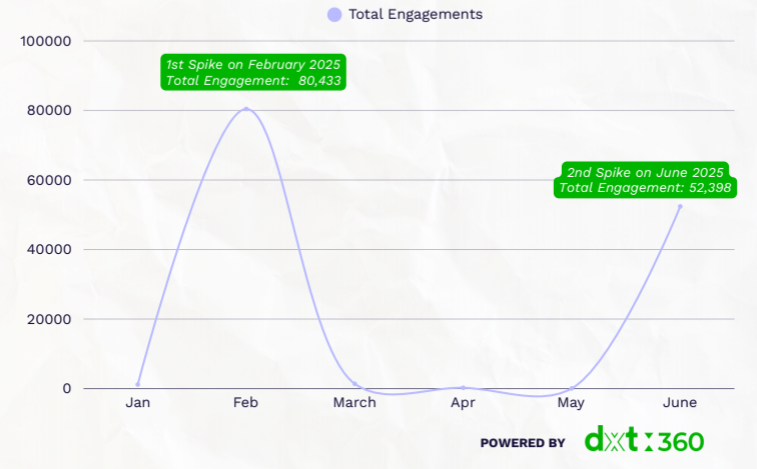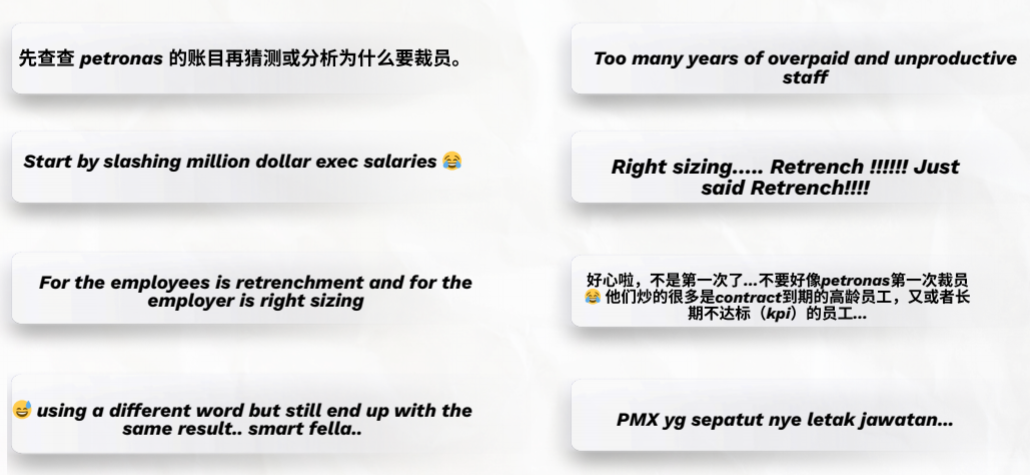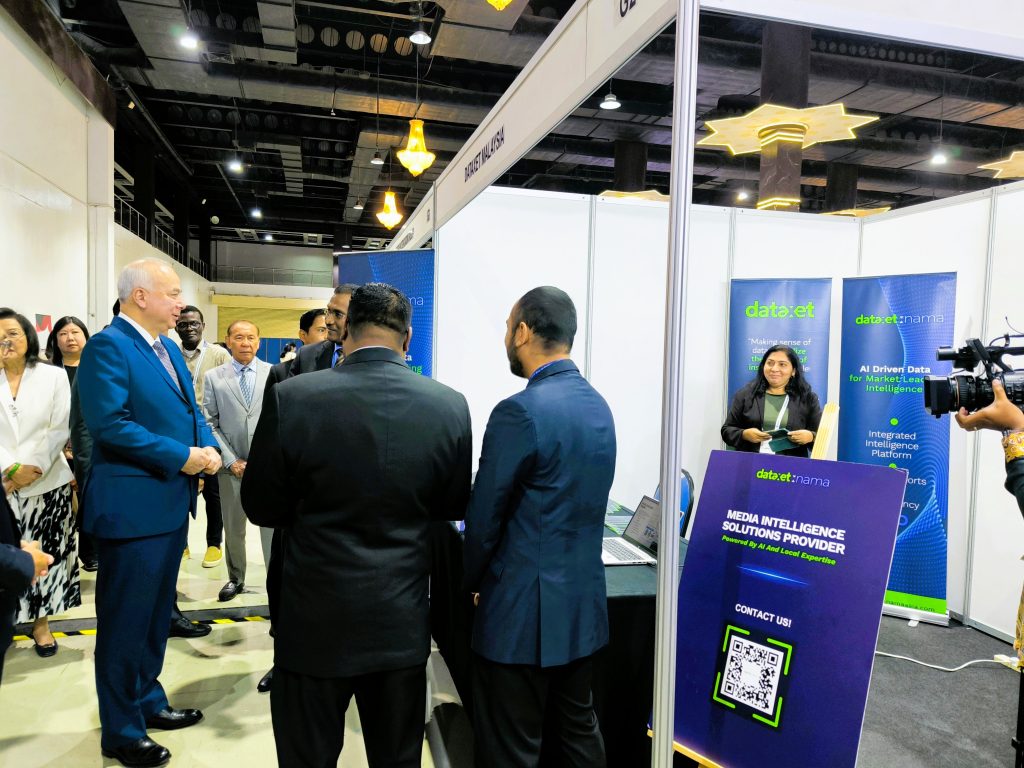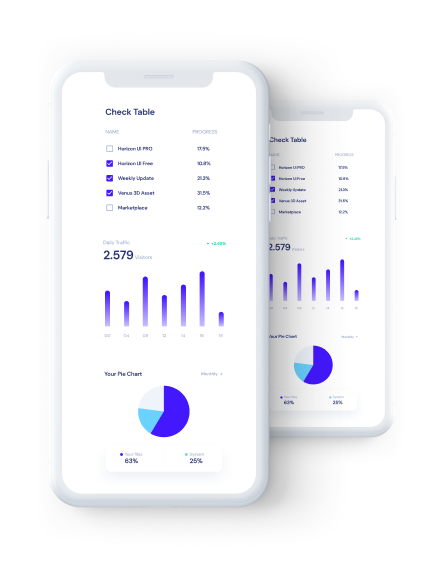Between 1 January and 9 June 2025, the issue generated 1,412 mentions and 135,663 engagements across Facebook, Twitter, Instagram, and other major platforms. While the national oil company emphasised long-term sustainability and focused investments to enable continued growth, online conversations focused on the immediate consequences: shattered livelihoods, rising living costs, and deepening distrust in both corporate and governmental decision-making.
From major workforce changes like the Petronas layoffs to regional developments at the ASEAN Summit 2025, our coverage keeps you informed on key issues. Visit our news section for more insights and articles.
 Timeline of Public Reactions
Timeline of Public Reactions

Initial rumours began circulating that up to 5,000 positions could be affected. Leaked information from internal briefings, led by the Petronas president and group CEO Tengku Muhammad Taufik, hinted at eligibility criteria that included tenure, performance ratings, pay grades, and a voluntary separation option. Benefits and support packages are structured based on employee category and employees’ years of service. The support provided may vary depending on these factors, including financial planning guidance and emotional support services. Anxiety and speculation rapidly spread online.
February 2025 – First Engagement Spike (80,433 engagements)
Public interest surged following Tengku Tan Sri Muhammad Taufik’s internal briefing. The chief executive officer’s statement—“this is not a retrenchment… If we don’t act now, Petronas may not exist by the time it turns 60″—sparked heated debate. Many users viewed the messaging as tone-deaf or evasive, especially during a time of falling crude prices and economic uncertainty.
June 2025 – Second Engagement Spike (52,398 engagements)
The formal staff memo and public press release reignited national attention. The framing of the layoffs as a “green energy pivot” and part of a comprehensive transition programme failed to convince many. Discussions shifted toward accountability, transparency, required industrial relations practices, and the ripple effect on oil and gas resources and related industries.
Between these spikes, engagement remained relatively muted, with March (1,384), April (235), and May (54) recording minimal traction—suggesting public discourse reignited only at key flashpoints.
 Where Did the Conversation Happen?
Where Did the Conversation Happen?

Facebook and Twitter were the epicentres of conversation, with users driving intense commentary and resharing leaked content. TikTok and Instagram played a secondary role, largely amplifying emotional and satirical content surrounding the gas company and various government linked companies.
 What Drove the Conversation?
What Drove the Conversation?
The Petronas layoffs triggered widespread emotional responses and policy debate. Five key themes emerged that captured the nation’s attention:
1. Job Losses & Employee Impact (30%)
This was the most dominant concern. Netizens expressed sympathy for affected employees—many of whom were seen as long-serving contributors with families to support. Commenters decried the scale of workforce adjustments, citing fears over job security and financial stability. Many rejected the term “rightsizing,” asserting it masked the reality of mass retrenchment. Conversations also touched on safeguarding employee welfare amid economic instability and called for market competitive separation packages.
2. Blame on Government (25%)
A significant portion of criticism was directed at the federal government. Users questioned why a gas company with RM40 billion in profits was allowed to cut jobs without scrutiny. The silence—or perceived complicity—of various government linked companies further fuelled public outrage. Comparisons to past administrations emerged, with calls for more transparent placement decisions and compliance with minimum statutory requirements.
3. Sarawak & Petros Influence (20%)
In East Malaysia, debates centred on the role of Sarawak and its state oil company, Petros. Many speculated that political pressure from Sarawak had influenced Petronas’ restructuring, potentially shifting strategic control to the state. While some supported decentralisation, others feared it would create fragmentation in national energy policy.
4. Economic & Industry Impact (15%)
Beyond Petronas employees, the conversation expanded to contractors, vendors, and developers. Concerns emerged over cancelled projects, reduced contract scopes, and the broader risk of unemployment within Malaysia’s oil and gas ecosystem. Many questioned if green energy investments would materialise fast enough to replace the economic void. Concerns were also raised over talent mapping, strategic workforce planning, and potential placements across other sectors.
5. Malay & Bumiputera Rights (10%)
The restructuring raised ethnic and nationalist anxieties. Netizens feared that Malay and Bumiputera representation within Petronas might be reduced, with speculation that foreign workers or expatriates could replace local talent. These discussions reflected broader concerns about the erosion of national assets and traditional privileges under a changing economic model.
 Word Cloud Analysis: What Malaysians Were Really Talking About
Word Cloud Analysis: What Malaysians Were Really Talking About

The word cloud revealed a sharp focus on accountability, fairness, and the contradiction between corporate messaging and lived realities.
1. Workforce Cuts and Employee Anxiety
Keywords like “pekerja” (employee), “buang” (terminate), “staff”, “syarikat” (company), and “kerja” (job) dominated. Posts expressed fears of losing more than just income—but also identity. Many demanded structured platforms to support employees affected through career coaching, job search assistance, and exploring alternative career paths, including business ownership.
2. Sustainability Spin and Green Ambitions
Keywords such as “hijau” (green), “projek” (project), “right”, “penuh” (full), and “aset” (assets) captured the public’s scepticism. The company’s entrepreneurship programme run by Petronas Innovation Garage offers a guided pathway for affected employees to reskill or build startups. Still, many questioned whether this was enough to facilitate potential placements or ensure the company remains relevant.
3. Governance, Profit, and Accountability
Keywords like “petronas”, “kerajaan” (government), “rm40b”, “ego”, “naik” (increase), “gas”, and “minyak” (fuel) underscored public frustration. Users linked profits to dividends and rising fuel prices, challenging how oil and gas earnings were used. Calls for better coordination between development committees, human resources, and the transition council became louder.
4. Contractor Fallout, Development Risks, and Exploring Alternative Career Paths
With keywords such as “pemaju” (developer), “kontraktor”, “luluskan” (approve), “tutup” (close), and “kurang” (reduce), netizens from related sectors feared systemic fallout. Discussions around exploring alternative career paths, facilitating placements, and social security organisation initiatives gained traction.
 Sentiment Breakdown
Sentiment Breakdown



 What Netizens Were Saying
What Netizens Were Saying

 Final Thought
Final Thought
The Petronas layoffs signified more than workforce adjustments—they marked a turning point in public sentiment towards Malaysia’s gas fields champion. The move brought into sharp focus the growing divide between corporate profit and people welfare.
As Petronas navigates the rapidly evolving landscape of energy and economy, it must continue working closely with respective departments, people development committees, and the transition council to uphold required industrial relations and statutory requirements.
With clear communication, structured support, and a value-driven workforce strategy, Petronas can still position itself as a responsible leader in gas resources and energy innovation.
At Dataxet Malaysia, we help organisations listen better—by turning public discourse into strategic intelligence.
With DXT360, we empower companies to make informed decisions rooted in real conversations, real concerns, and real-time data.









